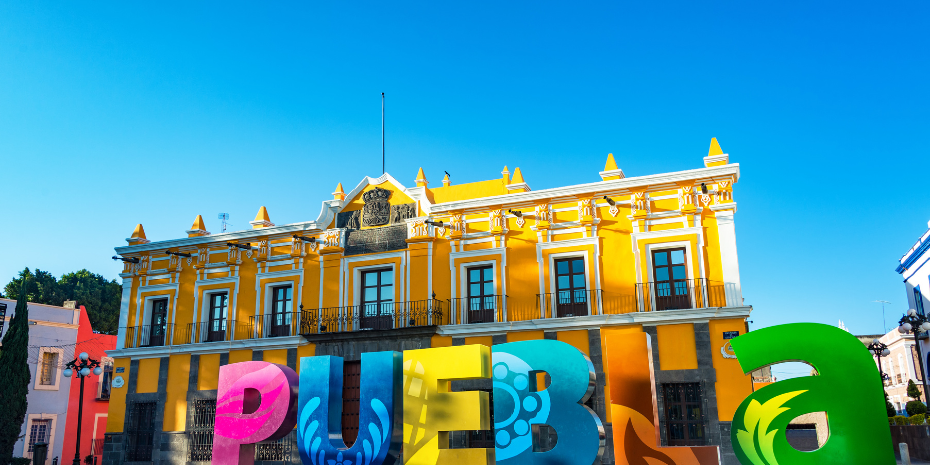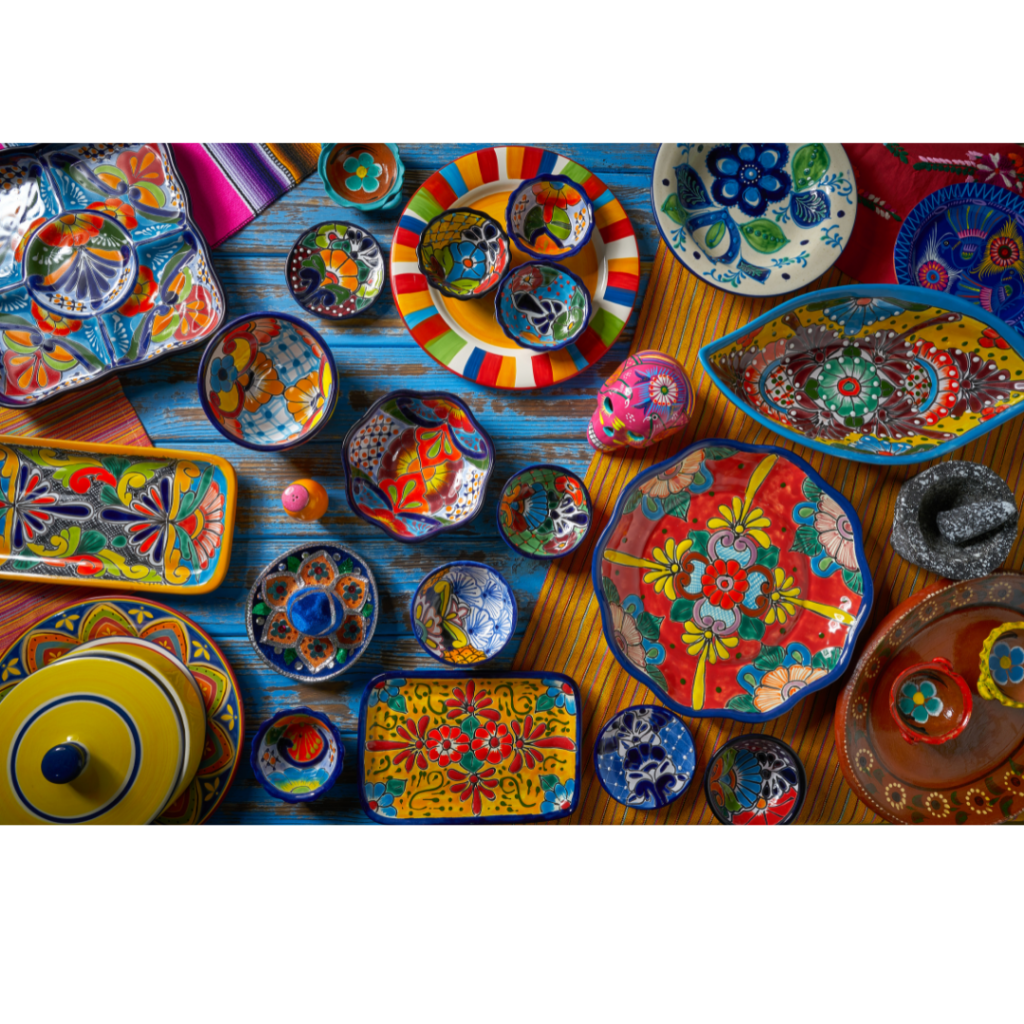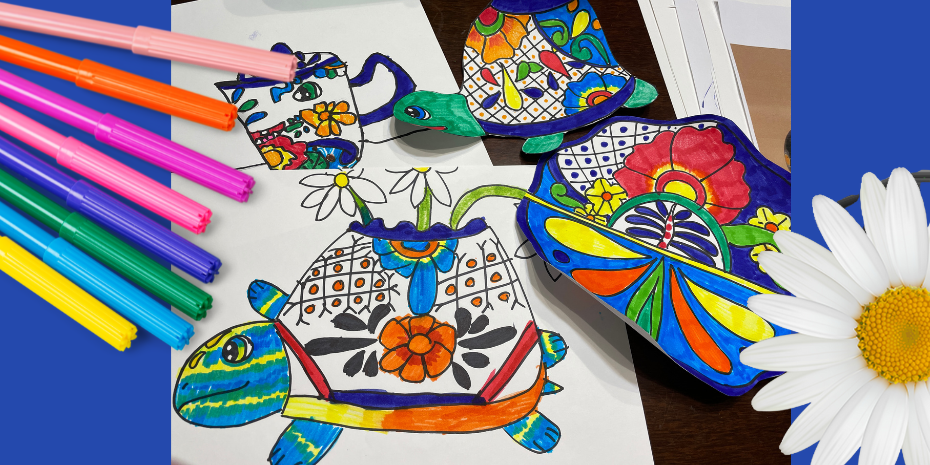When Americans think about Cinco de Mayo, bright colors, tacos, and margaritas come to mind. Decorations such as giant flowers, papel picados, and sombreros fill the stores.
But Cinco de Mayo is a celebration of Puebla’s victory over the French, and in Mexico, celebrations do happen, but with reenactments and by displaying the Mexican flag proudly. In this Cinco de Mayo Art Project, I wanted to celebrate something that Puebla is also known for throughout the world – its gorgeous Talavera pottery.

The area of Puebla is known for its clay, and two types are used in Talavery pottery. The original designs and techniques were both indigenous to the area, and brought over from Spain. Traditionally talavera pottery was hand-painted in blue and white, but gradually other colors were added. I’m not going to lie – I’m in love with the bright turquoise, greens, oranges, yellows, and reds.
One other thing about Talavera pottery that makes it easy to spot is the milky-white glaze on top.
While the style of Talavera pottery can be seen in stores everywhere, authentic Talavera pottery is expensive. There are only around 20 places that are certified, and those places must reapply constantly to keep their certification of authenticity. If a piece is certified, the shop is given permission to add its name to the piece, and it gets a special hologram.

Cinco de Mayo Art Project – Talavera Turtle
This project is perfect for art-on-a-cart, remote learning, in a classroom, or around the dining table. All you need is a piece of white paper and some markers (scissors are optional).
Turtles are one of the more commonly seen styles of Talavera pottery (often inauthentic) and these adorable reptiles serve as flower planters. Students may choose to go a completely different pottery route choosing a plate, tea pot, or something of their own design.
Make sure to download the step-by-step drawing guide and design handout at the bottom of this post.
Once the turtle or other piece of pottery is drawn, use the black marker to create the internal designs. Flowers, swirls, spirals, and teardrops are all common.
Separate a couple of the areas and consider adding the traditional crossed line pattern with colored dots.

Time for a color and cut…
Markers or crayons are perfect for this project (but if other supplies are available, feel free to change the medium).
The predominant color in Talavera pottery is dark blue. Choose this color for some of the sections or designs, and make sure that the color appears throughout the piece for unity.
Color the remaining turtle (or other pottery) with these colors: red, orange, yellow, lime green, green, and turquoise.
Choose to cut out the design, or leave it on the white piece of paper. If students did a turtle or vase, they can draw flowers inside.
Click the banner below to download the FREE step-by-step pdf with the lesson plan.
We would love it if you’d share!
Don’t forget to tag us at @soulsparklettes on social media if you make this talavera turtle art project with your kids or students – we love to see what you create!
Join one of our Memberships!
This is an example of the fun we have inside the Glitterbombers Memberships. Chose the level right for your students – Glitterbombers (K-7th) or the new Glitterbombers HIGH (7th-12th). With either choice, you’ll have hundreds more art projects, videos, and resources at your fingertips for whatever you’re studying, or whatever art concept you’re ready to teach. Click here to join our waitlist and find out when we open next!


Thank you so much for another beautiful art lesson. I’m sure that my students will enjoy it. And I always love to learn about new things.
You are so welcome! I’m always so thrilled to research techniques, cultures, and contemporary artists and bring them to everyone!